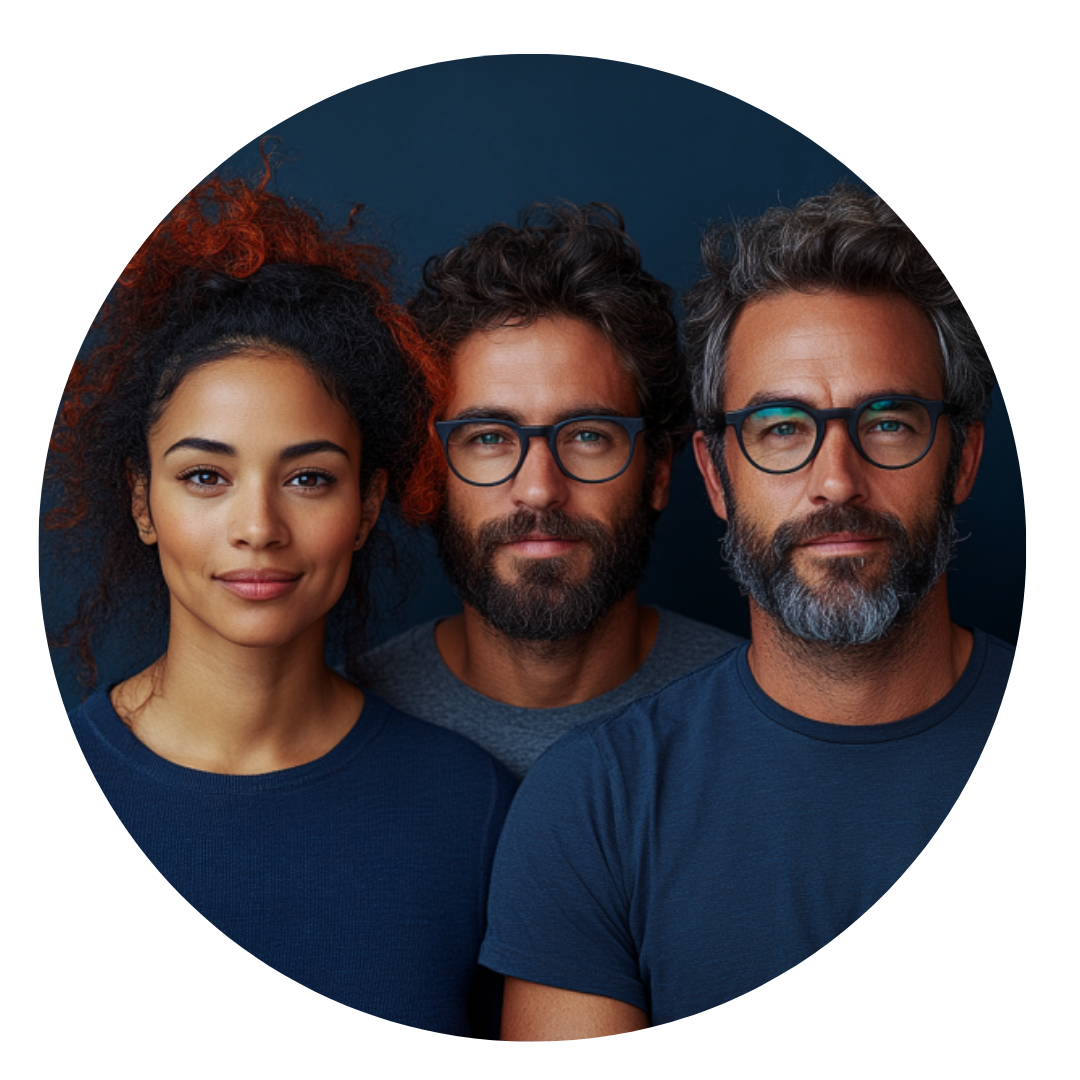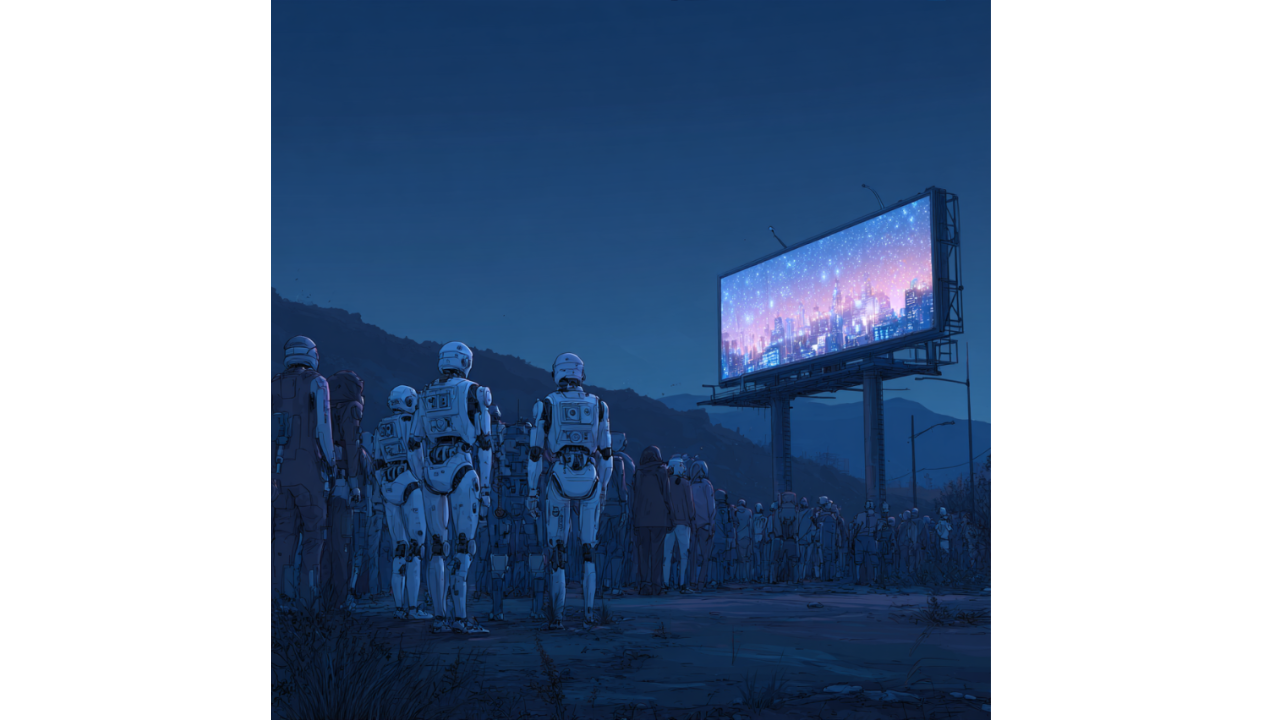1 min read
Meta's AI Ads: The Fast Food-ification of Creativity
you're scrolling Instagram and see an ad for cupcakes. The image is glossy, slightly plasticky, and feels like it was birthed from the fever dream of...
6 min read
 Writing Team
:
Jun 20, 2025 8:00:00 AM
Writing Team
:
Jun 20, 2025 8:00:00 AM
-2.png)
The cocktail conversations along the Croisette at Cannes Lions 2025 carry an undercurrent of existential dread wrapped in champagne-fueled optimism. As thousands of advertising executives sip Aperol Spritzes and network on yachts, they're simultaneously celebrating and mourning the end of advertising as they know it. The culprit? Artificial intelligence, which is simultaneously gutting the creative soul of the industry while creating the most lucrative commercial opportunities in Madison Avenue's history.
This paradox—AI as both destroyer and creator of value—defines everything happening at this year's festival, where the death of human creativity and the birth of automated profit margins are being toasted with equal enthusiasm.
The Creative Apocalypse: When Soul Meets Silicon
Let's be brutally honest about what's happening to creative work in advertising. When Meta can enable brands to "create, target and deploy ads by the end of next year" using AI, and when Google's Veo 3 can generate entire video advertisements from text prompts, we're not witnessing the evolution of creativity—we're watching its systematic elimination.
The former CEO of a top Madison Avenue firm admits the uncomfortable truth: "I'm afraid that in a couple of years, the big ad agencies will be a shadow of what they are today. Nothing can match human creativity and experience, but from research to placement to creative, a lot of what the agencies have done can be replicated pretty well by AI."
This isn't hyperbole. At Cannes Lions 2025, we've seen Coca-Cola's AI-generated ads, Kalshi's NBA Finals spot created entirely using Google's Veo 3, and Meta's unveiling of 11 new generative AI ad features that can transform static images into dynamic videos without human intervention. The prediction market for advertising creativity isn't just bearish—it's betting on complete obsolescence.
The emotional core that once drove great advertising—the human insight, the cultural understanding, the ability to tap into collective dreams and fears—is being replaced by algorithmic pattern recognition. As one industry veteran warns, we're heading toward "a world where creativity is dictated by an AI ad algorithm that feeds its own social algorithm, creating an endless feedback loop of grey."
What makes this creative destruction particularly devastating is how it's systematically eliminating the very diversity that made advertising compelling. When AI tools analyze existing successful campaigns to generate new ones, they inevitably trend toward the mean—producing work that's technically competent but creatively sterile.
Meta's new Advantage+ tools may promise "brand-consistent automation" and "AI-generated product highlights," but what they actually deliver is the industrialization of imagination. The nuanced cultural commentary, the unexpected visual metaphors, the emotional risks that define great creative work—all of these become casualties of optimization algorithms designed to maximize engagement rather than create meaning.
Adobe's Customer Experience Orchestration may "fuse creativity, marketing and AI," but fusion implies two distinct elements combining. What we're actually seeing is absorption—human creativity being digested by machine learning until only its most commercially viable components remain.
Here's where the story takes a dramatic turn toward commercial triumph. While AI may be destroying advertising's creative soul, it's simultaneously creating profit margins that would make Gordon Gekko weep with joy. The numbers emerging from Cannes Lions tell a story of economic transformation that's genuinely breathtaking.
Meta's Advantage+ system already boosts return on ad spend by an average of 22% for sales campaigns, and that's with relatively primitive AI capabilities. Goldman Sachs projects that a fully automated ad platform could unlock a $100 billion market of small and medium-sized businesses, potentially increasing Meta's ad revenue by 15-20% by 2026.
The efficiency gains are staggering. Where creative teams once produced a handful of ad variations per campaign, AI now enables "tens of thousands of variations daily," as Meta's Nicola Mendelsohn noted at Cannes. This isn't just scaling—it's exponential multiplication of commercial output.
Perhaps most remarkably, AI is solving advertising's most persistent commercial problem: the high barrier to entry for sophisticated marketing. Meta's new image-to-video tool can transform 20 product photos into polished, multi-scene clips with music, overlays, and text—no production team required.
This democratization represents a seismic shift in market dynamics. Small businesses that could never afford professional video production can now compete with Fortune 500 brands in terms of creative output quality. The addressable market for advertising services isn't just expanding—it's exploding.
Companies like Adobe are positioning themselves as the infrastructure providers for this new economy, with their Customer Experience Orchestration platform promising to deliver "intelligent, scalable and connected customer experiences" across millions of customers in real-time. The technical achievement is undeniably impressive, even if the creative result feels hollow.
The commercial opportunity becomes even more compelling when you consider the cost structure transformation. Traditional advertising required armies of copywriters, designers, directors, producers, and account managers. AI can collapse much of this labor into algorithmic processes that operate 24/7 without vacation days, creative differences, or salary negotiations.
WPP CEO Mark Read's departure announcement—reassuring staff that "we are now leading the way as AI transforms marketing"—and the Omnicom-IPG $13 billion megamerger are both responses to this new economic reality. The agencies that survive will be those that can most effectively arbitrage between human creativity costs and AI efficiency gains.
The streaming services and digital publishers who've felt pressured by tech giants' "very different cost model" now have access to similar AI-driven targeting and optimization tools. Netflix and Amazon's AI-powered ad formats that blend content with advertising represent just the beginning of this technological leveling.
What emerges from this creative-commercial tension is a bifurcated market that's actually more lucrative than what came before. At the top tier, human creativity becomes a luxury product commanding premium prices. As one ad sales executive predicts, companies will create "big, tailored bundles for clients that use sports as a hub, with other content like news and entertainment as spokes."
Live sports, major brand partnerships, and culturally significant campaigns will remain human-driven precisely because their scarcity becomes their value proposition. Meanwhile, the vast middle market gets served by AI-generated content that's "pretty good" at a fraction of the cost.
This creates what economists call a "barbell economy"—extreme value at both ends (premium human creativity and ultra-efficient AI production) with the middle hollowed out. For smart operators, this means unprecedented profit opportunities at both extremes.
The commercial opportunity extends far beyond just creating ads more efficiently. AI-powered advertising generates exponentially more data about consumer behavior, preferences, and responses than human-created campaigns ever could. This data becomes the foundation for entirely new revenue streams.
When AI can test tens of thousands of ad variations simultaneously, it's not just optimizing current campaigns—it's building the world's most comprehensive database of what motivates human behavior. That data has value far beyond advertising, extending into product development, pricing strategies, and market expansion decisions.
Perhaps most significantly, AI advertising consolidates power among platform owners in ways that create massive commercial moats. Meta's $14-15 billion investment in Scale AI isn't just about improving ad tools—it's about controlling the infrastructure that determines which businesses can effectively reach consumers.
Google's integration of Veo 3 into YouTube Shorts, Meta's Advantage+ ecosystem, and Amazon's AI ad formats all represent moves toward owning the entire commercial conversation between businesses and consumers. The platform that provides the best automated advertising becomes the platform that captures the most economic value.
The genius—and tragedy—of what's happening at Cannes Lions 2025 is that both narratives are simultaneously true. AI is indeed destroying the creative artistry that made advertising culturally relevant, reducing human insight to algorithmic optimization. The soulful connection between brands and consumers, built through decades of creative craft, is being systematically replaced by machine learning.
But AI is also creating commercial opportunities of unprecedented scale and efficiency. The same technologies that eliminate jobs for copywriters and designers create billion-dollar markets for small businesses and generate profit margins that would have been impossible under the old creative economy.
The executives networking on yachts in Cannes aren't confused about this paradox—they're actively profiting from it. They understand that you can mourn the death of creative artistry while celebrating the birth of automated profits, because in capitalism, emotional authenticity and economic efficiency don't have to be aligned.
For marketing leaders, the path forward requires embracing both sides of the AI paradox. Invest heavily in AI automation for efficiency and scale, while identifying specific areas where human creativity can command premium pricing.
The companies that thrive will be those that can operate simultaneously in both markets: leveraging AI for volume and efficiency while maintaining human creative capabilities for high-value, culturally significant work. This isn't about choosing between human and artificial intelligence—it's about orchestrating both for maximum commercial advantage.
As Apple VP Tor Myhren declared at Cannes: "The good news is AI is not going to kill advertising. The bad news is AI is not going to save advertising. We've got to save ourselves, by believing in what's always made this industry special: human creativity."
He's right about the first part and wrong about the second. AI won't kill advertising—it will just transform it into something unrecognizably efficient and profitable. The question isn't whether we can save advertising's creative soul. The question is whether we can profit from its transformation while it's happening.
Ready to navigate the AI transformation of marketing and advertising? Winsome Marketing's growth experts help companies balance creative authenticity with commercial automation, maximizing both human potential and AI efficiency. Let's build your dual-strategy approach.
-2.png)
1 min read
you're scrolling Instagram and see an ad for cupcakes. The image is glossy, slightly plasticky, and feels like it was birthed from the fever dream of...

The modern Internet, built on a foundation of advertising revenue that reached $1.1 trillion in 2024, stands on the precipice of fundamental...
.png)
Microsoft just pushed an update to Copilot on Windows that does something the AI assistant has desperately needed since launch: it actually connects...